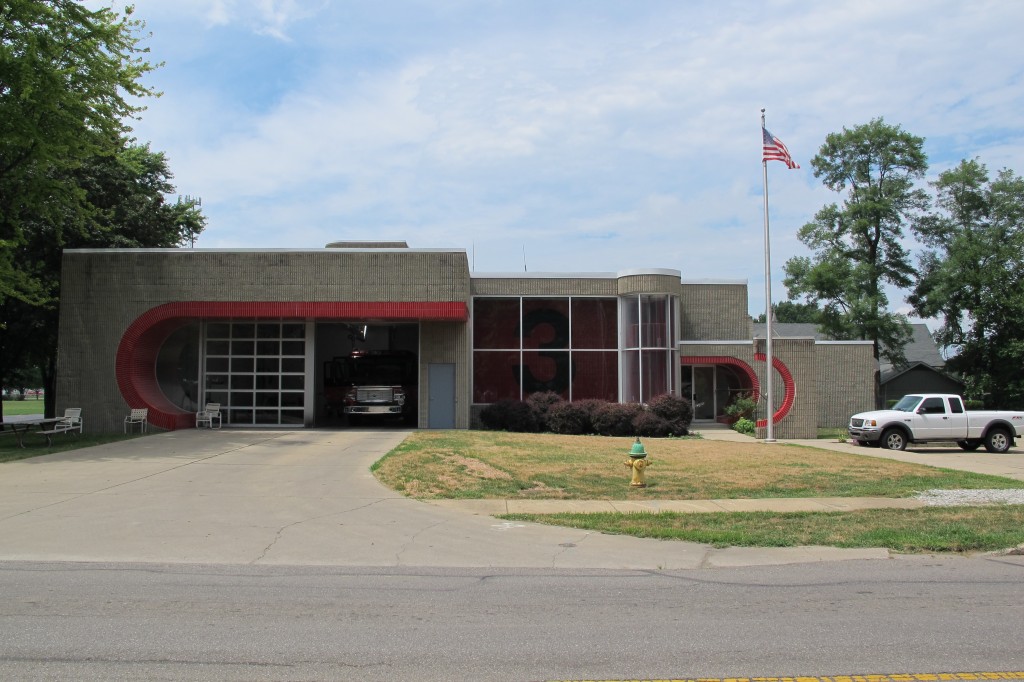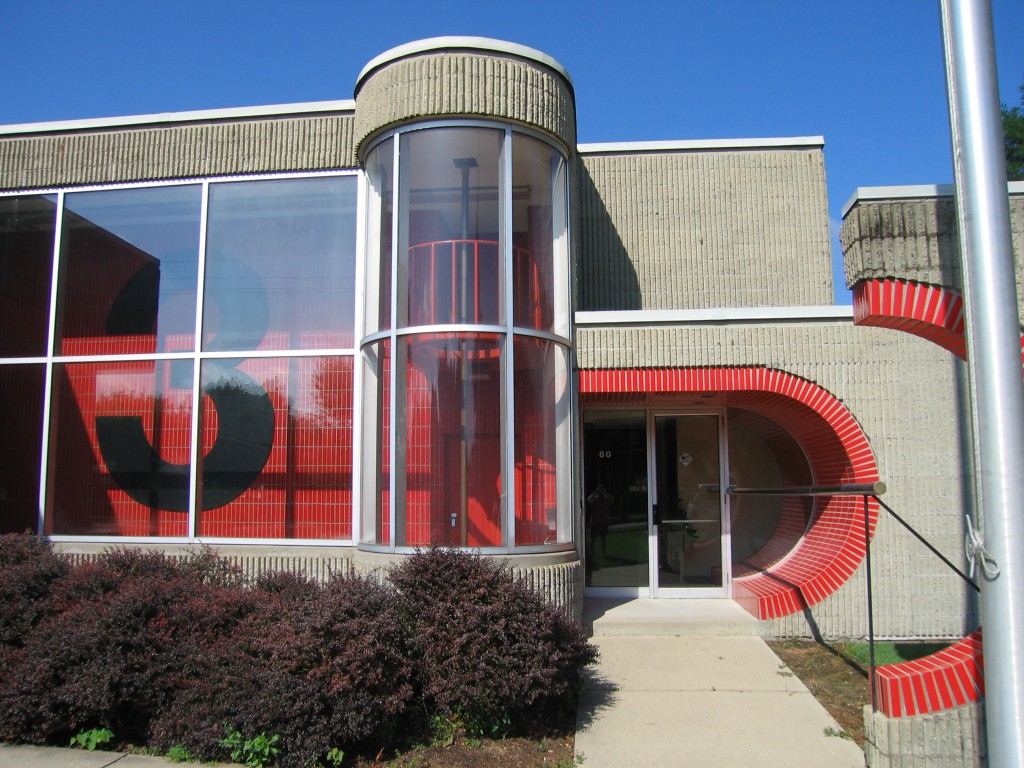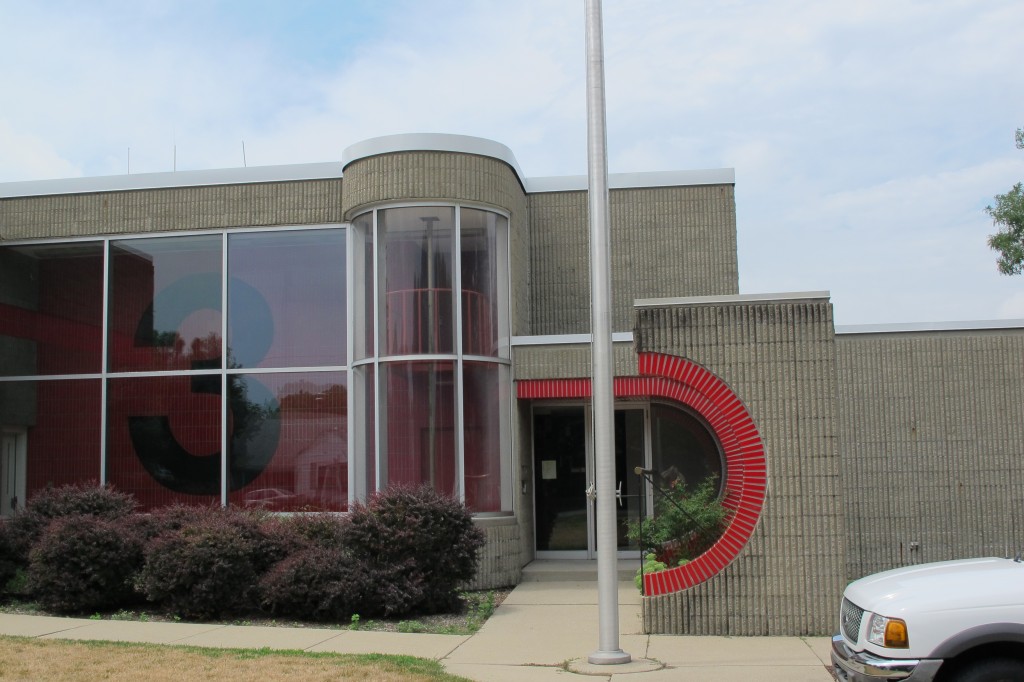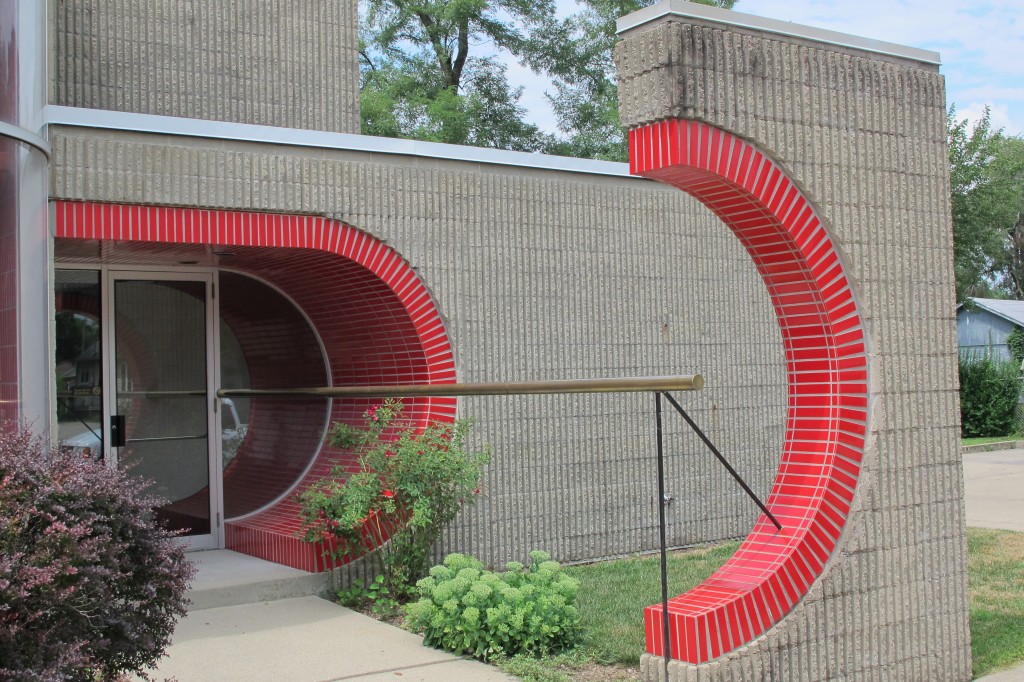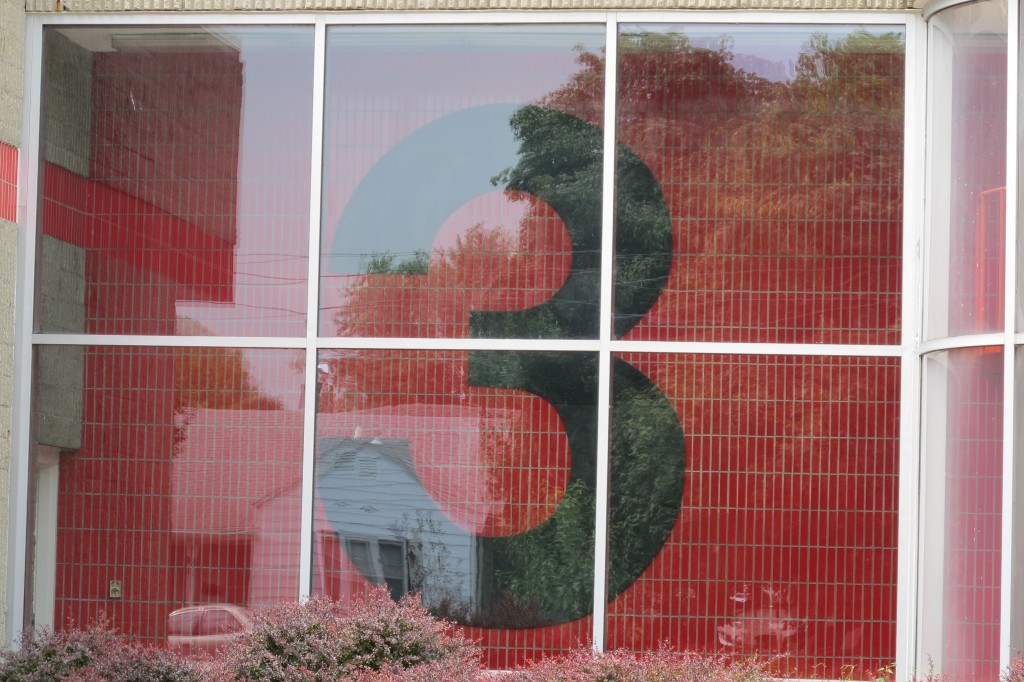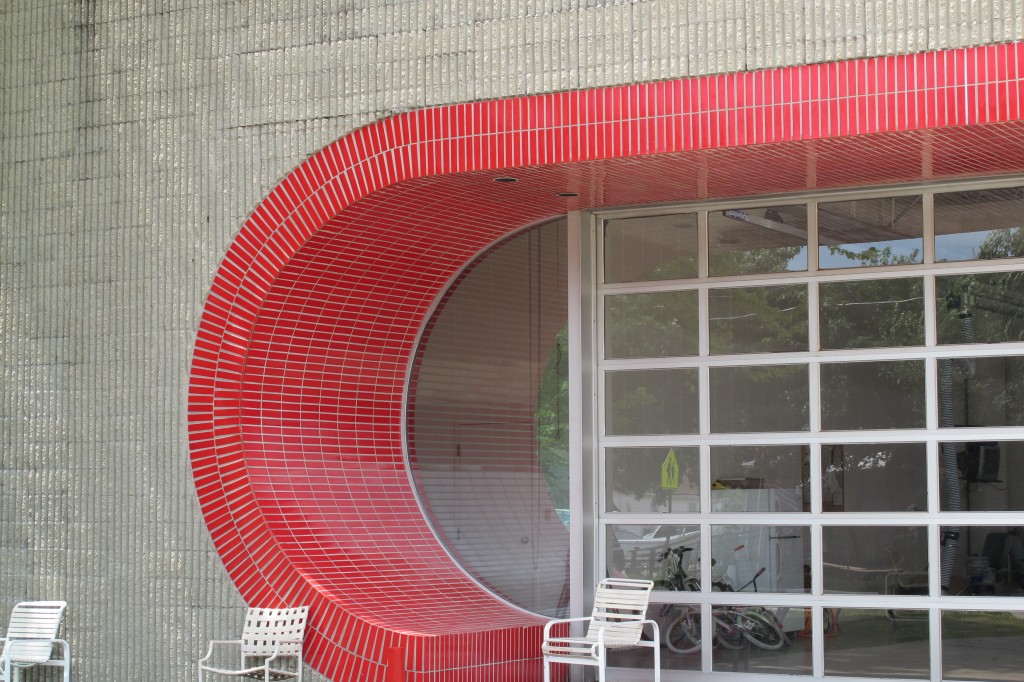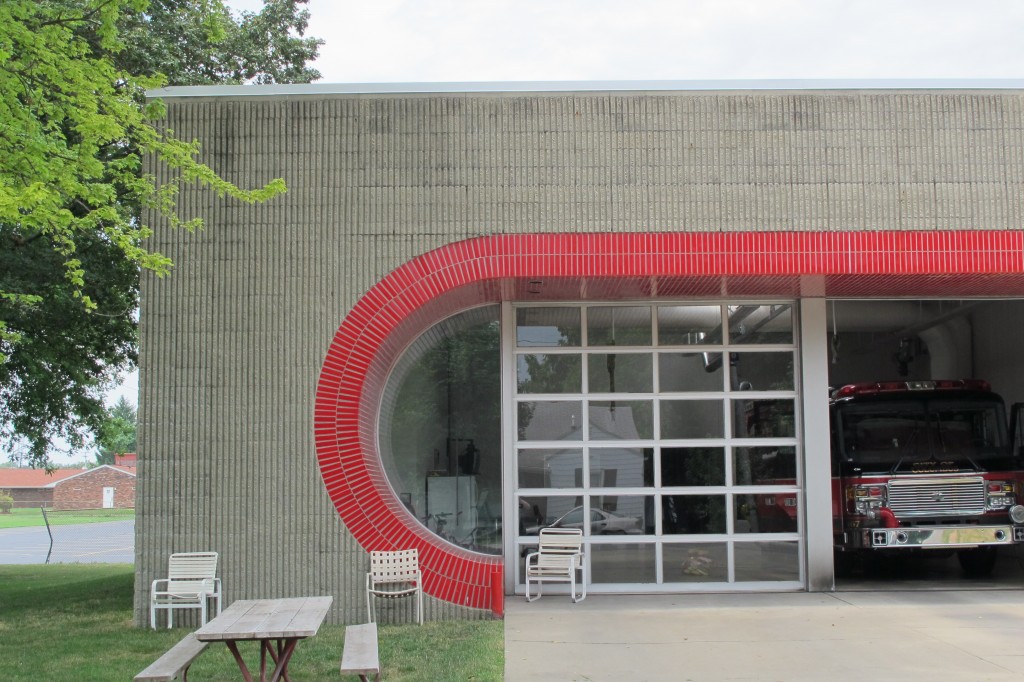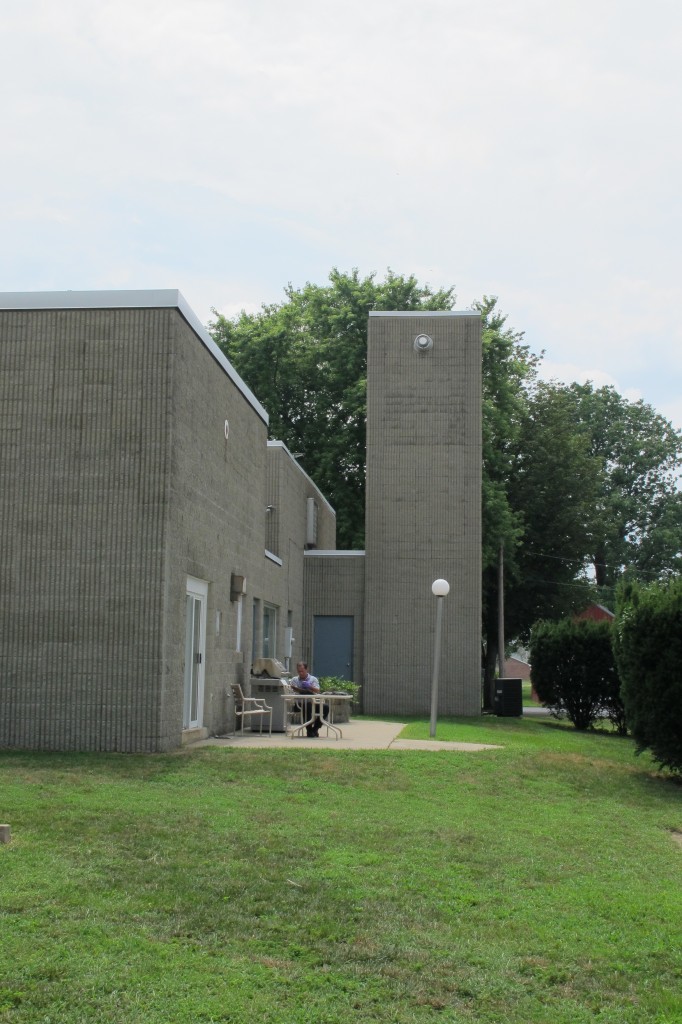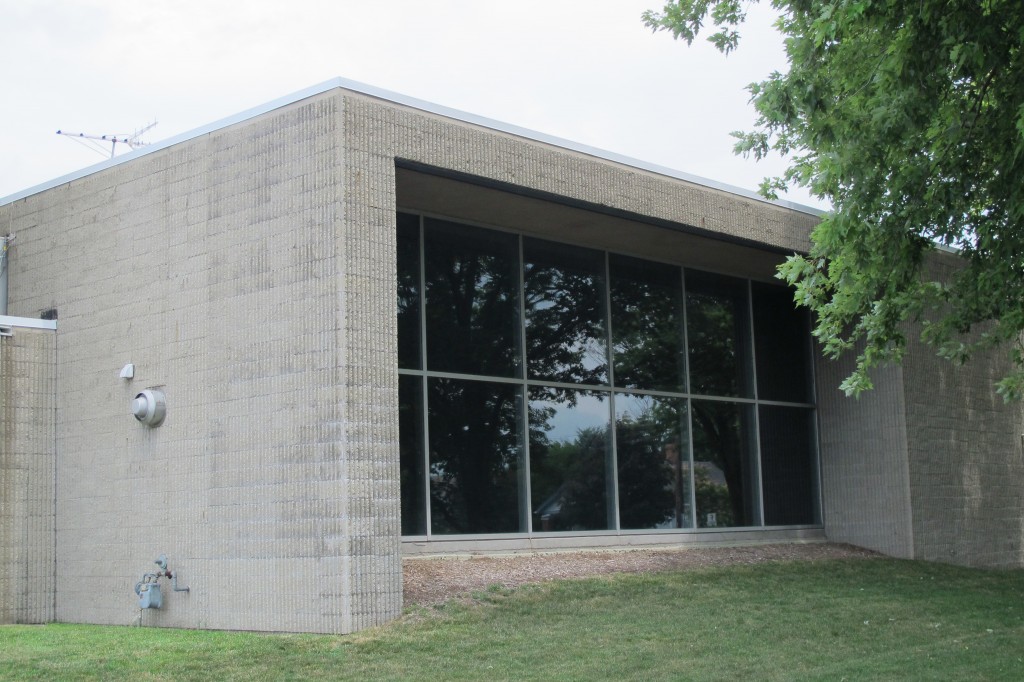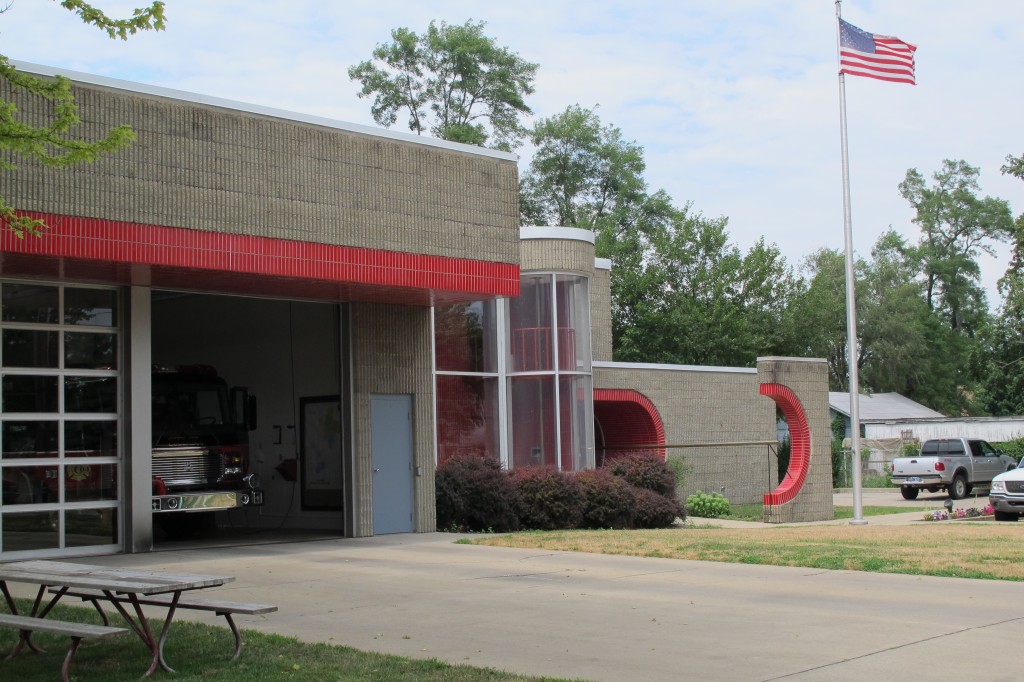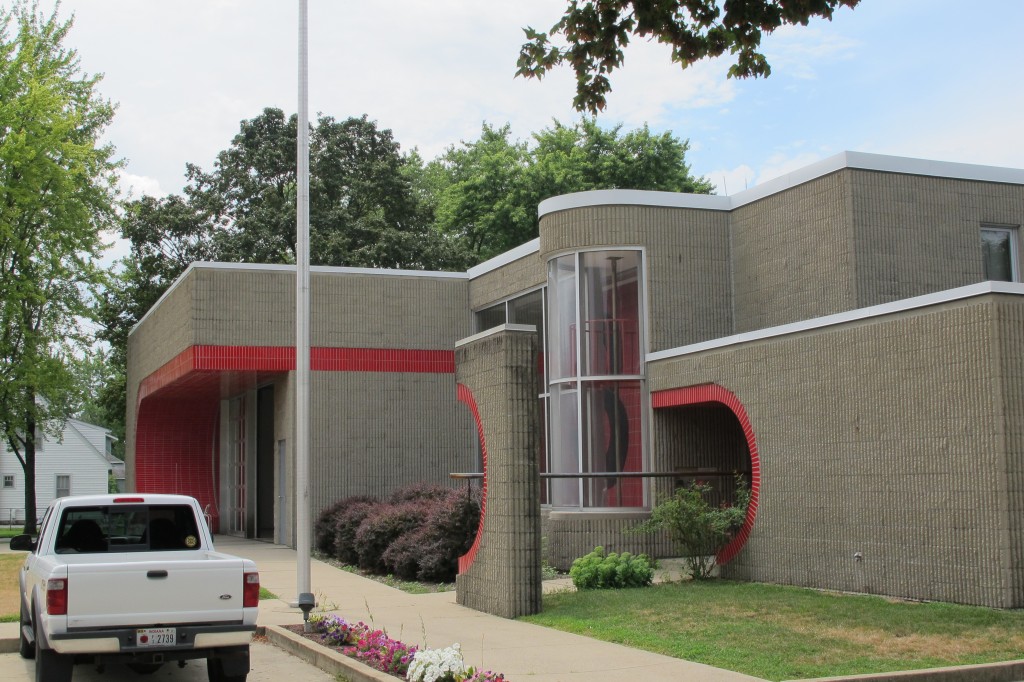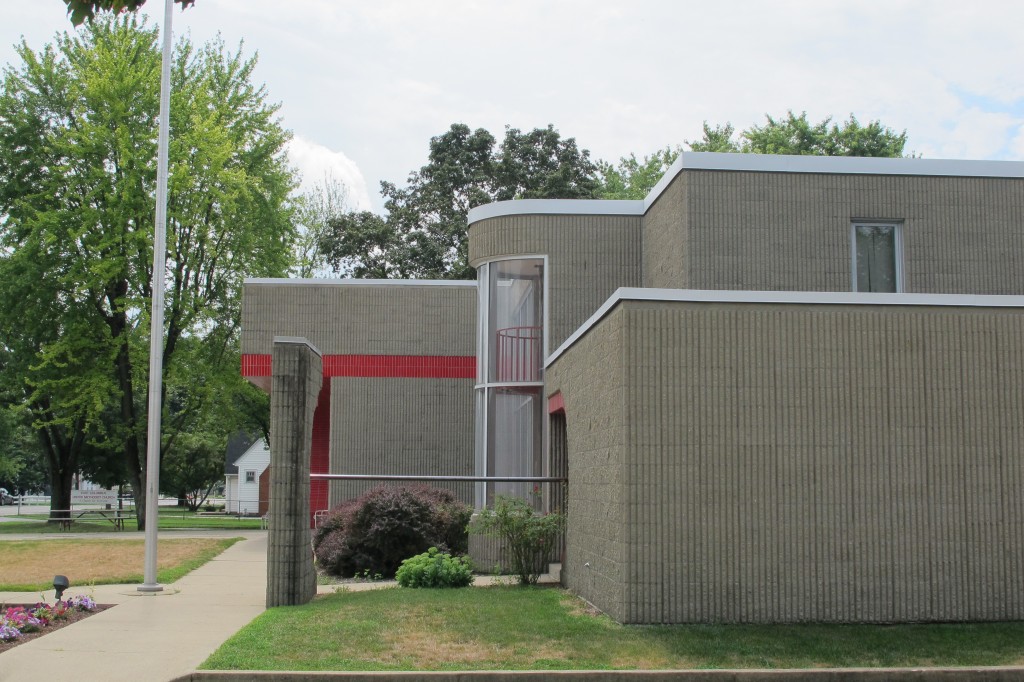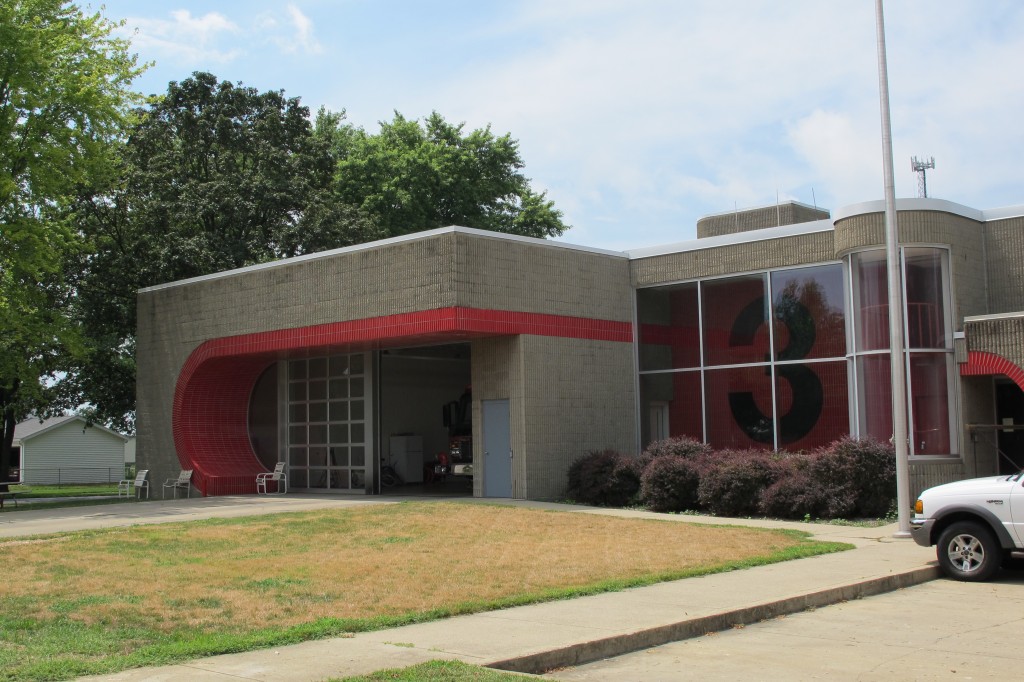(v12.12.14)
Art, Architecture and Design
This article spotlights a particular building or some other aspect of Columbus design. I welcome your comments, corrections and additions. Please share your experience and perceptions of these uniquely Columbus projects.
 Fire Station 3
Fire Station 3
- Built: 1983
- Address: 80 S. Gladstone Avenue
- Design Architect: William Burd (Wood & Burd – Columbus, Indiana)
While many of the schools and public buildings in Columbus have had their design fees paid through the generosity of the Cummins Foundation Architecture program, often the client has chosen to bypass the foundation rules and finance the complete project on their own. This doesn’t mean however that good design has been overlooked. The Cummins Foundation has always offered the client a short list of nationally prominent architects to choose from. There are a number of local architects that have designed buildings that are as good or better than what we have seen from these “name brand” architects. They also have an advantage of already knowing the community and the client.
The Columbus Fire Department has a number of Fire Stations that were designed by prominent architects such as Robert Venturi, William Rawn and Susana Torre. They also have used local architects on numerous occasions. Fire Station #3, designed by William Burd is one of my favorite Columbus fire stations. Burd is a Columbus architect who has designed several fire stations as well as other buildings around the area. The building was financed by federal revenue sharing funds which covered all construction costs and even allowed the purchase of one new fire truck.
This building was built in 1983 to replace a building very close to the site that had served the east side of town since 1950. East Columbus was formerly a separate town from Columbus itself. After a controversial annexation in 1949, this fire company was formed using a remodeled tire store/garage at 2511 Indiana Avenue (address renumbered from 919 Indiana). The original concrete block building was built in 1949 as Hoosier Tire and Auto and was purchased in 1950 to be re-purposed as a fire station. While it may have been perfect to contain the fire trucks it was lacking in amenities for the firefighters themselves. When the new building was being designed, the comfort of the firefighters working and sleeping in the station during their shift was given particular importance. They were able to do a land swap with adjacent East Columbus United Methodist Church on Indiana Avenue so the old building could be used until the new one was finished in 1983.
Fire Station #3 is a 6,000 square foot building designed to house 2 engines and a four man crew. The exterior features bright graphics and large towers somewhat resembling the nearby Fodrea Elementary School. The two story building has a hose drying tower in the rear and a glass enclosed tower in the front with a visible fire pole. The architect thought it would be a playful touch to have a visible fire pole so the neighborhood children could run and watch the fireman sliding down the pole when they heard the fire alarm sounding. As I understand it modern fire companies have abandoned the use of fire poles and they are seldom if ever built in new stations. Disappointing news to traditionalists!
Nevertheless the fire pole is the main focal point of the design accented by the red brick and the “supergraphic” numeral 3 behind the glass front at the left of the fire pole. A cylindrical form is repeated throughout: vertically as in the towers and horizontally at the main entrance and the engine bay doors. The curves at the entrances and engine bays are accented by the red glazed brick contrasting with the grey fluted masonry block walls. They use a horizontal brass pole as sculpture at the main entrance to symbolize the fire department reaching out to the community and allowing the public to slide along it as the enter the building.
The apparatus area has space for two pieces of fire equipment, a bunker room, work rooms and storage areas with access to the hose drying tower in the rear. The administrative area on the lower level consists of the entrance lobby, office, training/conference/meeting room and a restroom. The first floor including the restroom is handicapped accessible.
It was intentionally designed to be less institutional on the inside and more homelike for the firefighters. Instead of a shared dorm room, the second level was designed with 4 private sleeping rooms for the crew. Each room has 3 separate fold down bunks and personal desk/closet units for the rotating crew. Although at the time there were not yet any female firefighters they were forward thinking enough to outfit one of the sleeping rooms with direct access to one of the two upper level bathrooms in case a female joined the crew. The building actually contains three bathrooms in contrast to the former facility which had only one. Some firefighters remembered that there were occasions where a race took place to claim the only restroom. The new space also contained separate rooms to clean and store their fire gear. The crew has a kitchen, dining room and lounge area on the lower level. There is a small private patio area in the rear.
Built during one of the early 80’s “energy crisis” periods, the station was designed to be as energy efficient as possible. A passive solar heating system was installed along the south wall (to the left of the engine bays) that was hoped would save 30% in energy costs. Unheated air is pumped at ground level into a space between glass panels and a solid black painted wall. As the air is heated by the sun, it rises and is sucked into the circulating heating system. Solar energy is also used for an auxiliary hot water tank. There were other energy savings features as well.
The building was dedicated on February 19th, 1983 with Mayor Nancy Ann Brown in attendance. The building won an Honor Award from the Indiana Society of Architects in 1983. In 1985, it was awarded the Masonry Design Award of Excellence from the Indiana Mason Contractors Inc.
(photo by Ricky Berkey)
(photo by Ricky Berkey)
(photo by Ricky Berkey)
(photo by Ricky Berkey)
(photo by Ricky Berkey)
(photo by Ricky Berkey)
(photo by Ricky Berkey)
(photo by Ricky Berkey)
(photo by Ricky Berkey)
(photo by Ricky Berkey)
(photo by Ricky Berkey)
(photo by Ricky Berkey)
(photo by Ricky Berkey)
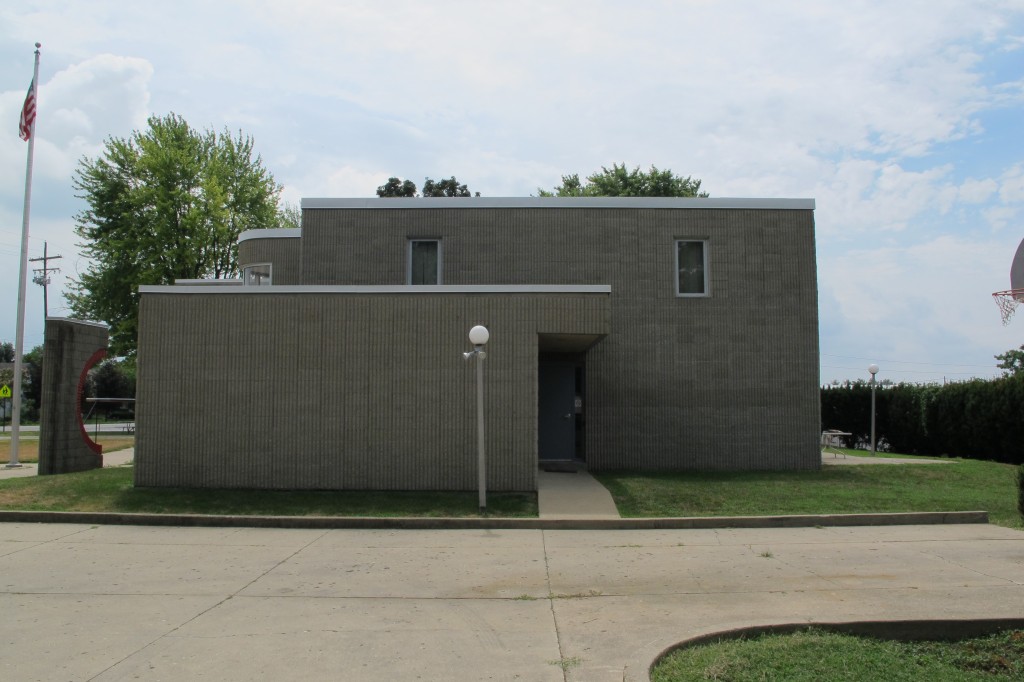 Side view
Side view
(photo by Ricky Berkey)
(photo by Ricky Berkey)
The Architect
William Burd
- Columbus, Indiana (Wood and Burd, Inc.)
Selected William Burd Projects
2009: Fire Station #2 (at the airport) – Columbus, Indiana
2011: Transit Center Adjacent to the Mill Race Center – Columbus, Indiana)
Historic Columbus
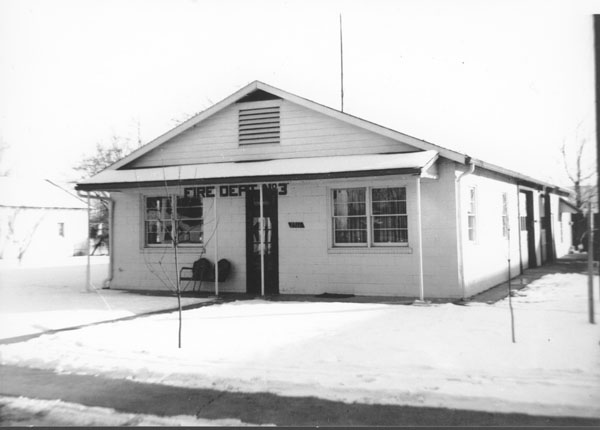
(photo used pending permission)
Original Fire Station #3 built in 1949 as a tire store/garage. Used as a fire station from 1950-1983.
Links/References
City of Columbus: official City of Columbus website
Columbus Indiana Architectural Archives
Columbus Indiana Architecture Digital Archives: A small portion of the Columbus Indiana Architectural Archives available online from the IUPUI digital library
3D Models of Columbus Architecture Executed in Google SketchUp:
The Republic Newspaper – Columbus, Indiana newspaper
Bartholomew County Public Library
Historic Columbus Website – David Sechrest’s tribute to Columbus History
Historic Columbus Message Board – a companion interactive forum to the David Sechrest historical website
Bartholomew County Historical Society
 Click HERE for a Calendar of Upcoming Events in the Columbus Area.
Click HERE for a Calendar of Upcoming Events in the Columbus Area.
Click HERE for information about Tours of Columbus Architecture and Design including the Miller House.
 Ricky Berkey
Ricky Berkey
Email me: rickyberkey@gmail.com

